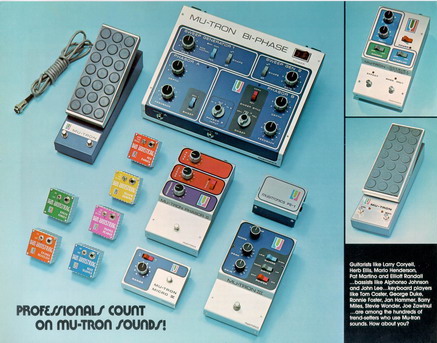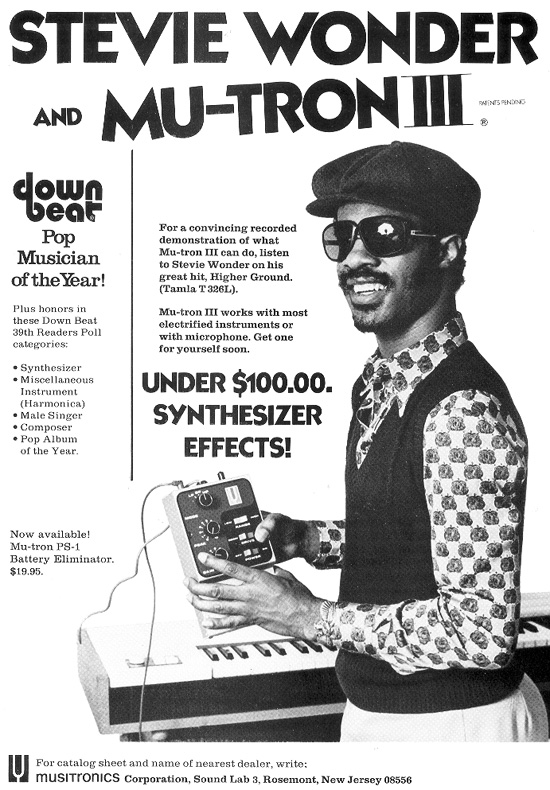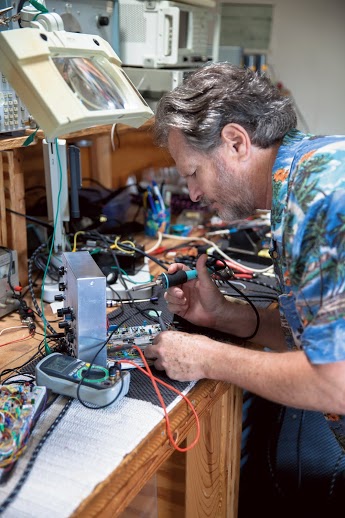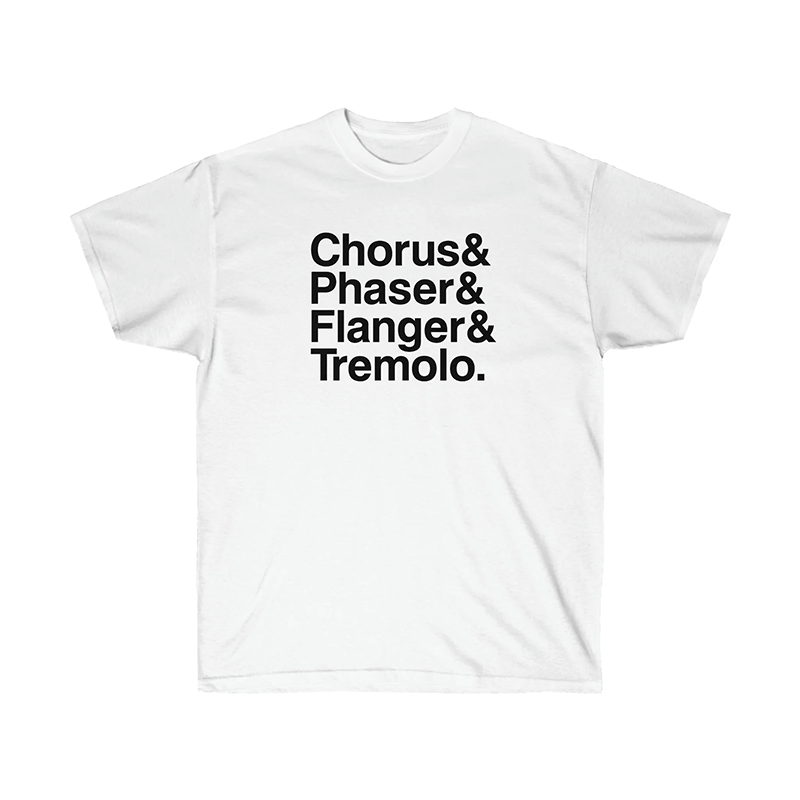Mike Beigel
Mu-FX
Encinitas, CA
www.mu-fx.com
[Mu-FX by Beigel Sound Lab is a division of Beigel Technology Corp.]
facebook.com/BeigelSoundLab
How long have you been a musician? How did you get into musical effects in the first place?
My main musical training was classical music on clarinet, but I also played Saxophone for a local high school dance band (“The Crescendos”), and for some local rock & roll bands and guitar just for fun. This was 1963-4. I was equally interested in science/engineering, and music. I had a tough time deciding whether to go to MIT or Manhattan School of Music, for college. But Since I wasn’t “Star” musician material, and got accepted at MIT, I chose Electronic Engineering since there was a better chance of making a living after college graduation. The ensuing years have shown that I likely would have starved to extinction in the musician aspect of the music biz…
While at MIT, by my second year I had a bit of an identity crisis (it was the ‘60’s and identity crisis was in the air like the flu). EE by itself seemed dreadfully lacking, like a mind without body or feelings. My wish was then to combine EE with some aspect of humanities, psychology or the arts. My “student advisor” was fairly well stumped by my dissatisfaction by the ‘soul-less’ nature of EE alone. He didn’t have any advice for me. Ironically, that fellow eventually became the President of MIT!
Electronic music was virtually unknown at MIT, Moog’s synthesizer was still in modular form, and “classical avant-garde” electronic musicians were busy with tape splicing, simple equipment and music theories that sounded better than the music itself. After not-a-little deliberation and some strange kind of luck, by combining electronic engineering with some of the music theories prevalent during the late 60’s, I “dreamed up” an unusual approach to combining the required Bachelor Thesis for each of Electronic Engineering and Humanities, and that fortuitous combination (somehow!) got me through the last stages of college.
It all started out when, one rainy Saturday night, I was playing clarinet and acoustic-electric 12-string guitar, and listening to Ravi Shankar playing the Sitar… I got the strange notion of playing the clarinet directly into the sound-hole of the acoustic-electric, and getting the equivalent of a sympathetic-string output sounding through the guitar-amplifier. The idea grew into an architecture for an “instrument” (and as I later realized, a “sound modifier”) that could accept any kind of electronic or acoustic signals from an environment, and by analyzing the signal according to a fixed or variable “structure” of allowable signal parameters, to synthesize tones related to the tones of the input signal (and/or modify the input signals and synthesized tones) and feed the re-synthesized or altered signal back into the environment that generated the original signal.
In that way, the device could receive inputs from a musical instrument, or a crowd of people, or a natural environment, and transform the (intentional, random, or semi-random) environment with the output sounds. The “Source-Dependent Musical Instrument (SDI)” for EE and Humanities thesis, was a signal analyzer, synthesizer and sound modifier directed towards a resolution of “Determinacy and Indeterminacy” in musical composition, “musique concrete” and environmental based music. Since I never actually finished writing the second thesis on the music theory of the SDI and by 2006 was mainly writing patent applications, as an ‘apology’ to the MIT Humanities Professor who let me get away with that caper, I wrote a patent application based on an extension of the basic notions from 1968… and the patent issued in 2013.
Who have been some of your major musical influences, past or present?
Growing up in the mid to late 1960’s, the music of that time was the main influence in popular idiom, as well as “down home’ blues and folk music. But I was also equally interested in classical music, ancient music, and music from India and other parts of Asia. The electronic-music composers of that time were also a major influence.
As the years passed, classical and ‘esoteric” instrumental music was a main area of interest. The Musitronics / Mu-Tron era (1972-78) brought me into contact with high-visibility (and low-visibility) Rock stars and Jazz musicians. I met and worked with many of the endorsers of Mu-Tron products. Elliott Randall, Larry Coryell, Stevie Wonder, Jerry Garcia, Joe Zawinul, Frank Zappa, etc. — they were musical influencers as well as innovators in music using the Mu-Tron effects. So, I influenced and was influenced by those musicians.
What led to the start of Mu-FX? How long have you been in business?
We must go back a long way, Mu-FX has deep roots:
While still at MIT, I worked with a “tech start-up” financed by investors. We designed products in a variety of industry fields, but I was mostly interested in electronic musical product design and the investors let me and my colleagues do anything we wanted to. Then the stock market crashed in 1970 and we were left with a bunch of ideas and semi-developed prototypes, and no money. Finally, one (of a number of) music synthesizer products were licensed to Guild Musical Instruments under Al Dronge (a forward-looking entrepreneur, and not coincidentally the father of Mark Dronge of DR Strings). Our synthesizer system was made in 2 parts – the sound generating synthesis engine, and a “Timbre Generator” which had 4 voltage-controlled filters. The basic filter design was later used in the original Musitronics Mu-Tron III.
The last prototype timbre generator also had an envelope follower, in addition to its connections to the synth engine’s ADSR envelope generators. The idea of separating the two synthesizer sections was to enable two different markets: Synthesizers and sound modifiers. By this time (1971) Moog, ARP, and others had produced non-modular synthesizers, so our idea was somewhat a hybrid between the “modular” and the “one package” synth system. Our synthesizer was controlled by a unique kind of “hand-piece” which I learned how to play, and (demanded by Guild) a keyboard.
Mid-way into the project I moved from Cambridge MA to Warwick NY, and founded Beigel Sound Lab, to complete the project and continue with development of electronic musical products starting with voltage and digitally controlled synthesizers of various levels of complexity. We were in final stages of production engineering when Al Dronge died in a crash of his private airplane. The rest of Guild’s management wasn’t as forward looking as Al, and cancelled the project about a week or so later. Aaron Newman, who worked on Guild’s guitar amplifier line, also saw his career there coming to an end, but he saw possibilities in our synthesizer system. By down-sizing the envelope-follower and the voltage-controlled filter, the Mu-Tron III (originally code-named Auto-Wah) and Musitronics were created.
When Musitronics and the Mu-Tron line were sold to ARP, I went into business as Beigel Sound Lab, and did product designs for musical products and soon for industrial products till about 1988, when my career took a left-turn into the newly emerging RFID business (now familiar as “Near-Field”) and moved to California in 1990. It was fun and took me around the world, including Antarctica, but the business had many down-sides including social mis-uses of a technology I intended for animal and industrial ID functions. Fortunately, in 1995 I wandered into a NAMM show for the first time since 1980 and met former arch-competitor Mike Matthews. In 1996 I started to work with Mike M (Electro-Harmonix) and designed a series of “Q-Tron” envelope-filters and phasors, and did other R&D projects till about 2011. In 2012 I re-animated Beigel Sound Lab. Seeing the prices of old Mu-Tron products on the “vintage” market, it seemed a worthwhile idea to re-animate the product line. Taking advantage of modern components and manufacturing techniques, I developed the Tru-Tron 3X, then the Octave Divider, the BoosTron 3 and (next) the Phasor2X. It’s not an easy business, but it’s gratifying in a different way than “industrial” business.
Now I’m much closer to music again and enjoy working with some of the survivors of the ‘70’s and emerging younger musicians. I hope to resurrect the entire “Mu-Tron” product line in compact (and more functional) formats. I would also like (very much!) to diversify the product line and use the many other new technologies that enable musical creativity and expression. My main interest has always been in R&D, and product design at the leading edge and the “high-end” of any field. I’m also interested in re-uniting the Mu-Tron trademark with its original roots, but the outcome of that is not certain.
Did you have formal schooling, or are you self-taught? Take us through that story:
The answer is YES to both. Well…..I had plenty of formal schooling, but in large part I’m self-taught. One can only vaguely describe the late 1960’s in Boston, in terms of distraction from goal-oriented academic dedication. I have no idea how I got through school. But I had some really great teachers. At MIT, there were Amar G Bose (THAT Bose!) for EE and acoustics, Barry Blesser (a true pioneer of digital audio and the first digital reverb system) for circuit design and audio. He was also my thesis advisor for the cross-disciplinary “Source-Dependent Musical Instrument” project. In music, David Epstein who was a very fine musician and music scholar, and John Harbison who is a well-recognized composer of modern music, were my thesis advisors for the music/humanities thesis I never finished. Roy Lamson, the head of the Humanities department at MIT was a benefactor in a big way. He got me my diploma even with an un-finished humanities/music thesis.
But it was mostly AFTER college that I learned my trade. It’s interesting what the necessity of “paying one’s own way” in life will do as a motivational factor. By a great turn of fortune I was also privileged to learn “a thing or two”, as well forming a lasting friendship with Bob Moog. By the time Musitronics was in full swing I met quite a few Jazz and Rock & Roll stars, and learned from them what they wanted in their “musical toys”. Among those were Stevie Wonder, whose song ‘Higher Ground’ put Musitronics “on the map”, and who now uses a special Tru-Tron adapted to his special needs and special talent. Frank Zappa taught me about several musical subtleties I had never thought of. Spending most of a night at a Rolling Stones rehearsal and giving Mick Jagger the first prototype of the Bi-Phase was an education all by itself. In the Jazz idiom, Larry Coryell and Joe Zawinul stand out as brilliant and personable collaborators in turning electronic boxes into musically edifying extensions of their instrumental work.
Elliott Randall (best known for ‘Reelin in the Years’ with Steely Dan) was a musical advisor to Musitronics and became a lifelong friend. All of these “post-graduate” teachers helped me to understand the subtle and often counter-intuitive aspects of musical electronics, the uses of musical products, and the beneficial relationship between technology and the arts.
This section is woefully incomplete in terms of all the teachers and benefactors I have been lucky to meet. Education in the true sense never stops.
What drives you as far as new pedal creation is concerned? How long does it typically take for an idea to come full circle and become a demo pedal? What’s the process behind new gear, and the eventual release of it to the public?
Well, it’s certainly not the money! I could be doing almost anything else and make a better living at it. It has to do with some kind of search for excellence. All through professional life I have wanted to make “the first, the best, or both” and musical electronics is my artistic outlet. I want to provide some means by which really talented musicians can expand their modes of expression. When I made (with plenty of help and collaboration) the Mu-Tron III, I had no idea what it would be used for in music. Sure, I knew it was an “automatic wah-wah” but I never could “hear” in advance what it would do in the hands of a really talented artist. Stevie Wonder’s “Higher Ground” was a perfect example of something I had hoped for but couldn’t myself conceive—the use of that kind of sound in a highly spiritual musical composition. I had thought it was mainly a quacky item that would be a sometimes-used novelty in music that would be a lot more pedestrian.
The other driving force is technology itself. As a card-carrying Nerd, I grew up on electronics parts catalogs and still can’t put down the many technology magazines that show up here. Putting that technology to use in an artistically-oriented field and product area is a strange use compared to 90% of the other uses of technology developments. These days it’s relatively easy to throw together some circuits gleaned from the internet and get them quickly to market in the fairly standardized format that most “stompboxes” take on. And get a pretty good result. But I want to get a very very good result. That makes the development process take longer in several different ways.
For the Phasor2X (still to be released) when we saw a delay coming from one supplier, and with a little extra time and conversation with Rand Anderson (working musician, computer guru and co-designer of Mu-FX new products) I did the unthinkable: Changed the intrinsic design of the product to greatly enhance its “Perform-ability”. Our small size and minimal organization structure allowed this to happen. We had to notify our incredibly patient pre-paid customers of the additional delay and re-design. I expected to see a not-insignificant amount of returns of the pre-payment by customers who had their minds set on the “first version” of the product. But not only did NOBODY ask for their money back, a few bought control pedals or more Phasors. We learned from all this, that one part of our customer base trusted the company, the process and the wait for a product that wasn’t what they thought they ordered.
Another benefit from this apparent disruption is that we have perfected our “Mu” referenced housing design and our PC board design methods. That will assure reduced development times for future products. We are also developing some of our own specialized components to allow the quality control and versatility of future product designs. We are even contemplating the possibility of selling our special components to other companies in the field. The process itself of product development at a small company has its advantages and disadvantages. The flexibility of the design and production engineering process, as described in the example of Phasor2X, is one of the great advantages of little companies that don’t have a hierarchical operations structure. Consensus on the product functions, components and many subtle aspects that usually come under the name of “secret sauce” or “mojo”.
What are some of the biggest concerns facing the profession of musical “stomp box” products today?
By far, the over-crowded marketplace for effects products. With so many choices for the musician in just about every segment of the effects marketplace, it’s hard to see how small companies can survive at all. Even the high-end “boutique” market we presently serve has more competition in it than the total effects market of the “Mu-Tron” era, the mid to late 1970’s.
Next is our trademark situation. We don’t own the USA Mu-Tron trademark so we had to use the combination of my own name and a MU type trademark, even to get people to recognize the connection between Mu-FX (Beigel Sound Lab) and the original Musitronics Corp. Mu-Tron mark. I would imagine that very few of the present generation of younger (and even middle-aged) musicians remember the old Musitronics, and many less would connect my name as a company founder and designer of the product line. When Leo Fender sold his name along with his Fender product line, and even though he started Music Man at the same time everybody knew who he was, I would venture to say that the Fender name sold many more products than Leo Fender’s new venture (and likely “as-good-or-better” guitars….).
Musitronics, in the 1970’s was indeed the “gold standard” for the Mu-Tron effects it made. And although the products we make at Mu-FX are (in my opinion) “as-good-AND-better” than the original products, and cost less than the rare vintage Musitronics Mu-Tron units, our sales are presently limited to a small group of devoted customers who (it seems) will unconditionally buy anything we design; that’s not enough to support a robust little company. So, capital-short and with almost no PR and Advertising, we are lucky to have the devoted group of customers, but it’s not enough (and not enough word-of-mouth recommendations) to support the kind of growth and new product introduction we need.
The high cost of our small production runs also results in a product line we can hardly sell through retail outlets. About 80% of our business both domestic and international is from direct sales. We are working to change this, but it’s a chicken-and-egg problem to bootstrap production quantities and finance enough publicity and advertising to get a group of dealers willing to settle for less-than-average mark-up on products that are top-end in the price range. Telling the bank about our potentially glorious future based on increased sales and new products doesn’t seem to convince them sufficiently to finance the capitalization we need to make it happen quickly.
We would REALLY like to build up a product line that covers “most” of the product types that musicians use. Musitronics had about 8 products, we presently have only 3 in the marketplace. Competitive companies have 12 to 50 or more. Even if we filled out the Musitronics original product line we would still be a very specialized company. I would like to apply the same level of quality to a more complete range of products. That takes time and money, to make something that is really a “gold standard” product line, and new products don’t have a “vintage” reputation—they must earn a reputation against the well-known “leaders” in each product category. That also extends to brand recognition. So, for that reason I am having conversations with former close colleague regarding the possible re-uniting the Mu-Tron mark with the original designer…
Where do you see pedal building going in the future?
That depends on the depth of the “future” you are considering, I will restrict comments to the near future, out to maybe 5 years. Beyond that, likely it’s not relevant to this discussion. Extrapolated speculation doesn’t work, it cannot account for “invention” which causes disruptive change. Before personal computers nobody could imagine a computer on the desk or in one’s pocket. Before the internet, nobody could imagine an ocean-deep store of communication and information available almost instantaneously. Before cell-phones (combined with the two above items) nobody could imagine the omnipresence of both communication and information on one’s person.
One aspect (by linear extrapolation into the near future) is more predictable: it’s the increasing miniaturization and commoditization of components and products, as well as increasing computing power and commoditization of digital-based technologies.
Another aspect is in terms of methods of production of products, in terms of engineering required to produce a ‘new’ product, and the number of products required to constitute a ‘production run’…and whether you mean RESEARCH, DESIGN, PRODUCTION or COST/PERFORMANCE ratio. That’s one aspect: what CAN be made, and who is able to access it.
Another aspect of the future is what do musicians, and audiences want? It’s not all technology driven. For instance, if the cultural climate is adventurous there will be more diversity and likely more challenging products to serve the culture. Which is influenced to some extent by what can be made and accessed, and also what is the mood of the people who make the music.
In the near future, say out to 5 years ahead, I see 2 major issues:
The first is WHERE R&D takes place, and WHERE production takes place. It’s no secret that Asia has taken the lion’s share of both component production, sub-assembly production and finished-product production. Though R&D still takes place mostly in USA and Europe, it’s more than interesting to see Chinese companies hiring USA designers to set up product designs for Chinese made products with Chinese company names. And if you look at Japan, you see their leadership (in some areas) of both design and production (likely subcontracted out to China).
The second is the “Analog vs. Digital” question. The music-performance industry is really one of the very few hold-outs of analog vs. digital signal processing and amplification. At the present time, it takes a pretty good pair of “ears to hear” a qualitative difference between the best analog processes and the best digital emulations of these processes. Certainly there’s an emotional preference, based on long history (and the warm glow of vacuum-tube light) for analog processes and amplification, even at the generally higher prices and larger packaging of present analog products. Our company Mu-FX presently depends on this preference for its very existence.
Although there are product types for which digital processing is clearly better than analog (and in the case of delay processes, analog isn’t even well-suited to the job), the rapid advancement of sample-rate, bit depth, and computation power portends that digital processing has the potential to outpace analog SIGNAL-PROCESSING dynamic range and distortion characteristics in every respect…
…except (for now), ONE. That one is the MODELING aspect:
For whatever reason musicians like the sound of analog musical effects (sometimes a dirty, sloppy signal process whether overt or quite subtle is preferred over a pristine-clean process of similar type), the difficulty of designing a digital equivalent is in the sophistication of the digital model of all aspects of the analog process. Sometimes the digital model completely misses the essential qualities that inhere in the analog process. Sometimes the digital model “understands” the essential analog qualities but can’t perform the computation complexity/bit depth/latency time to produce a perceptual equivalent of the analog process. There is a tremendous amount of both complexity and subtlety in analog systems both acoustic, electro-acoustic and electronic.
Even with a super-computer (I mean TODAY’s super-computers, not the I-phone equivalent of “yesterday’s” super-computers), it’s still a question of whether the designer can conceive a model that really emulates the analog system past the level at which a “golden-ears” listener could distinguish the two apart. But I think it’s only a matter of time till that does happen. And that’s where the question of “how much future do you want to consider?” becomes very relevant.
Who are some of your favorite builders in the industry right now?
In no particular order: Zvex, Keeley, Strymon, Line 6, Pigtronix
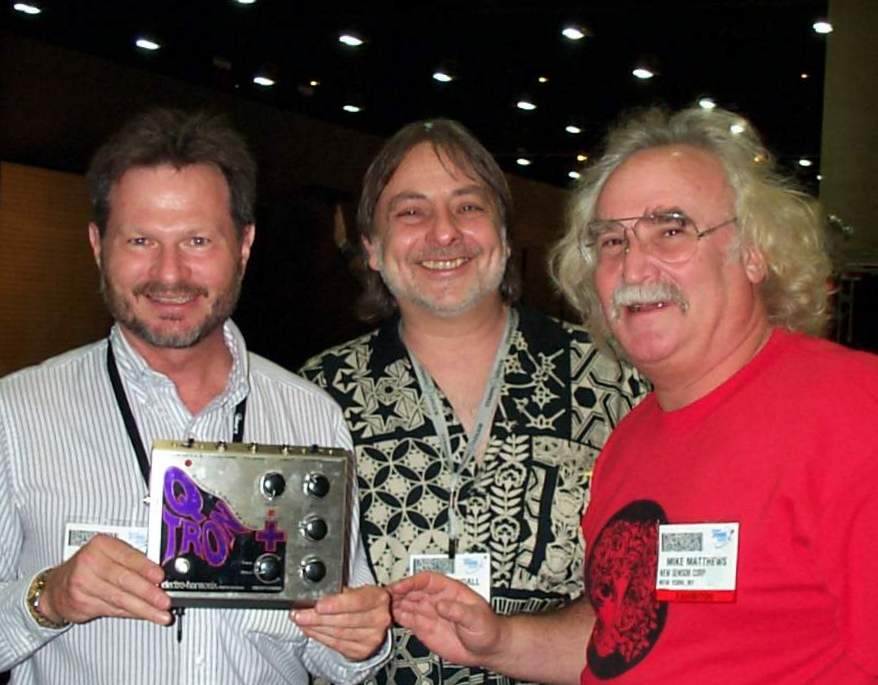
Name the last 5 (or 6) records you listened to:
(in no particular order):
Larry Coryell: Eleventh House (Low-Lee-Tah)
Elliott Randall: Reelin’ In The Years
Laura Marling: Gurdjieff’s Daughter
Thomas De Hartmann: Journeys To Inaccessible Places
John Lee Hooker: Boogie Chillen
Ravi Shankar: Raga Yogeshwari
The Klon hype: Love it or Hate it?
No Comment. There’s a similar but much less noticed “hype” regarding old Musitronics Mu-Tron products.
Any last comments, or anything you’d like to talk about?
It might seem as if all types of musical signal processes have already been conceived, and that new product design is now only a function of the combination of processes and ergonomics, and (maybe mostly) economics. That was the status of science in the mid 1800’s. “There’s nothing left to invent or discover” was infamously quoted by numerous cognoscenti. And that was just before the dawn of an entirely new realm of invention, thought, and industry.
Since that particular “paradigm shift” (i.e. Newtonian physics to Relativistic and Quantum physics), the paradigm shifts have been happening with increasing frequency and disruptive intensity. The technology involved in music-making changes slowly relative to other fields of culture and commerce, even though it is presently dizzyingly rapid. But the paradigm really hasn’t shifted very much.
Yes, we have digital versions of just about every signal process, and multi-processes, and complex patches for both analog and digital, and pocket-sized commoditized versions of all the above. But what is, or will be, really new? And of the potential “really new”. What’s really worthwhile musically?
That will be answered in, and by, the future.
Thanks so much to Mike for taking the time to answer some questions! Make sure to go check out www.mu-fx.com to peruse all of their gear – Cheers!
GET EXCLUSIVE UPDATES, CONTEST INFO, SEE OUR LATEST DEMO VIDEOS AND MORE:














